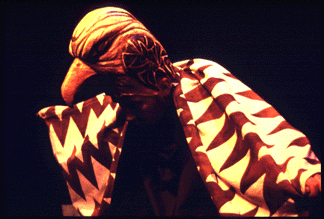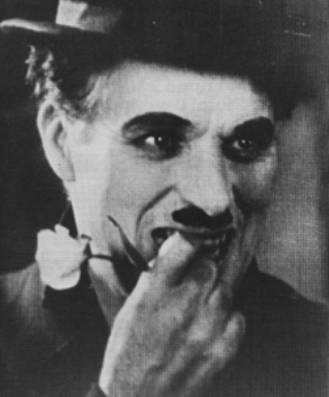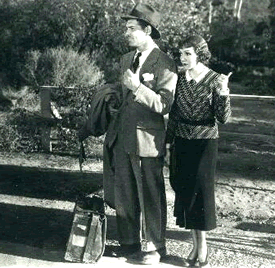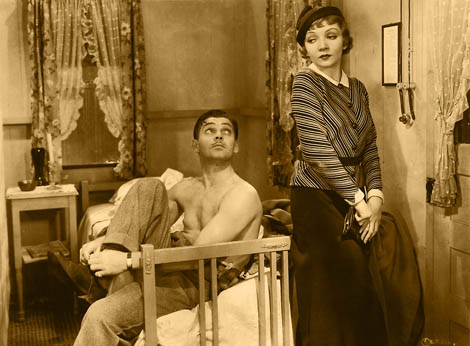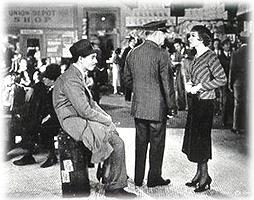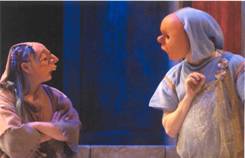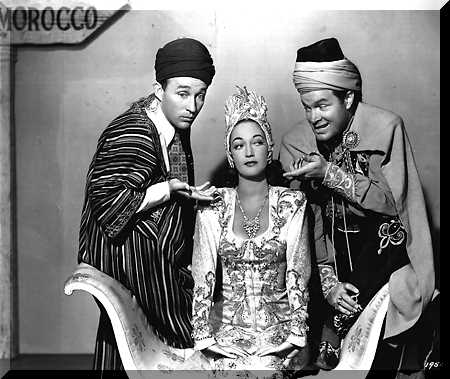 |
|||||||||||||||||||||||||
|---|---|---|---|---|---|---|---|---|---|---|---|---|---|---|---|---|---|---|---|---|---|---|---|---|---|
An actual costume constructed for a production of "Birds" as performed by the Aquila Theatre Company of London
Mr. Charlie Chaplin Chaplin’s characters use grotesque actions and features such as the huge feet and shoes, the mustache (made from skillfully applying shoe polish), the derby hat, the cane he uses for a walking stick, and the shuffle walk (42). Like the Greek masks of the time, the Tramp's costume makes him very easy to be spotted and instantly identified. If not for his strategically comically oversized shoes, Chaplin would sink in the cess pool of poverty. These shoes are a great symbol of poverty and to quote Dan Buckingham, "The shoes and suit make him look like a dirty clown. But not only his clothing, props and make up; his walk and movement also separate him from the crowd. The props Chaplin's general vagrant character handles, ie. bowler hat and cane, make Charlie Chaplin's aura to appear wanton of the fruits of high class living. However, he utilizes these props contrary to the 'proper' way, thus revealing and again, maintaining his status as that of the lower class tramp. To cite a specific example; in The Count, while in the presence of an exotic dancer, Chaplin seemingly looses control of his sexual appetite, and penetrates a turkey (thankfully broasted) via his cane. In the first picture of Chaplin, (shown below) we can see the pants that are baggy and too large, the hat that is too small, and a coat that does not fit. This is Chaplin's way of exaggerating the costume. The costumes in ancient Greek plays used padding around the butt and belly. The baggy pants is what Charlie uses instead of actual padding. Shown below are further examples of Charlie Chaplin's overall costume including clothing as well as makeup.
Week Two. Menander's Dyskolos
Following our reading of Menander's Dyskolos, It took some consideration to determine what exactly would have been different regarding the use of costume. In comparison to virtually anything Aristophanes would have created with old comedy, Menander's genre of new comedy would have allowed for a drastic change in the area of costuming. No longer did the typical comedy revolve around the Gods of the ancient world or even maintain a worldly perspective. New comedy generally consisted of humor more often revolving around the goings on of the household or that of a smaller community rather than that of an empire. Instead of having mythological characters in need of depiction, the comedy of Menander's time would have called for simpler, more familiar characters. Costumes and masks depicting the rich and the poor or the heavyset and the scrawny seem to be more in line with the comedy of new. Characters such as Sostratos and Chaireas, those of a higher monetary status, would have possessed costumes exuding a higher sophistication. Orderly hair and although exaggerated for those in the back, somewhat normal expressions would most likely have adorned their faces. Their clothing surely would have represented those of a wealthier class and played in marvelous contrast with the likes of Knemon and the many servants who are fairly substantial characters in the play. In line 366 of the play, Gorgias, a poor farmer, comments on Sostratos' costume, saying "Then what? Are you going to stand there, in your smart cloak, while we work away?" He does convince Sostratos to help with some of the work, but points out that Sostratos is not dressed properly to be a farmer.
"It Happened One Night" With regards to the 1934 blockbuster, "It Happened One Night" starring Clark Gable and Claudette Colbert, the topic of costuming is much more subtle. As well it should be considering the fact that film and the use of the motion camera allowed for the close up, and great differences in character and class were able to be conveyed through costumes without nearly the exaggeration and extreme stereotype that ancient theatre called for. Clark Gable's character, Peter Warne, was that of a writer for a New York newspaper. A big-name newspaper writer in 1934 would have been well dressed to a degree, but would not have found himself in the high society silks Claudette Colbert's (Ellen Andrews') upper crust cohorts would have found themselves in. Along those lines, Miss Colbert appeared immaculate in dress at nearly all times. There were times when her clothes were ruffled but only when she was to appear as someone other than herself. She was clearly of the upper class and her costume exuded it to a T. Clark Gable's character on the other hand, was indeed well dressed, but not nearly to the perfection of Walter Connolly, the man playing Miss Andrews' wealthy father. Like wise, Gables' duds were shabby when compared to Jameson Thomas' (King Wesley's) costume. The first picture shown below, with Gable wearing his hat standing on the side of the road, is a good picture that shows the difference between the two character's outfits. Ellen looks nice, even considering that she has been wearing the same clothes for the entire trip. Peter, wearing a suit, just looks a little more ruff around the edges. The hat adds a lot to this feeling. It almost seems out of place, at least for an upper class citizen like Ellen. The suitcase and coat draped over his arm also help with the impression of each character's social class. Frank Capra, director of It Happened One Night, It's a Wonderful Life, and Mr. Smith Goes to Washington, based much of his plot on differences in class, much like Menander. Both of their characters were meant to be instantly told apart by class. This was one of the main responsibilities of their costumes. Since much of their comedy is based on this rift in social classes, drastic differences in costumes was very necessary. The photos below reveal several of the costumes used to define social status in "It Happened One Night".
Week Three. Plautine Comedy The costuming of a Plautine theatrical production would not have been terribly unlike the costumes used by Aristophanes and Menander alike. All of the Roman Comedies take place in a Greek city, so the costumes would have tried to reflect the style of the Greeks (or Carthage). In the play Iran Man the costumes of the characters would have been rather stock (the lover is your usual lover, the pimp is dressed like a pimp, etc.) accept for the character from Iran. His costume was foreign and generalized; a cloak to his feet, a head wrap, and a very different mask. This, along with his lines, helped to portray him as a foreigner and Plautus as a man with little appreciation for true Arabian culture. A similar foreign costume design is seen in Towelheads. In line 1297, General Popoff makes a reference to the costume of Saddam by saying, "Who is this fellow with the long dress like an alter boy?" Saddam would have been wearing a similar long robe, making him stand out as a foreigner. The foreign dress or costumes used to show a different background and culture is used quit a bit not only in ancient plays, but in modern films like "Road to Morocco."
http://www.easternct.edu/depts/art/theatre/prod0405.html
http://www.easternct.edu/depts/art/theatre/brothersm.html
"Road to Morocco" In the movie “Road to Morocco”, costumes were utilized to portray exoticism in quite the mocking tone. Bob Hope and Bing Crosby find themselves in Morocco after drifting the Mediterranean upon a raft and hopping a camel into the city. Bob Hope’s character, Turkey Jackson, soon after their arrival finds himself sold as a slave to Princess Shalmar of Karameesh. The costumes involved in this movie are extraordinarily exotic and seemingly act in the favor of humor placing the American men, especially Turkey, in apparel very much unlike the attire of an American in 1942 until the present. The men find themselves donned with everything from sequins and robes to metallic embroidery and capes; infinitely exotic in comparison to 1940’s American dress. Much like in Iran Man, the costumes in this movie portrays an ignorance about the culture that the plot is based on. Both productions have an underlying bias against Arabian culture based on ignorance. The costumes also help to accentuate how out of place the characters are. This strategy may also be seen via Saddam's character in Plautus' Iran Man (Persa); quite similar to the method of dress desired for Jeff and Turkey in Road to Morocco.
http://www.loc.gov/exhibits/bobhope/mopic.html
http://www.bobhope.com/graphics/lamourlg.jpg
|
|||||||||||||||||||||||||
For questions or comments, please contact John Gruber-Miller |
|||||||||||||||||||||||||



